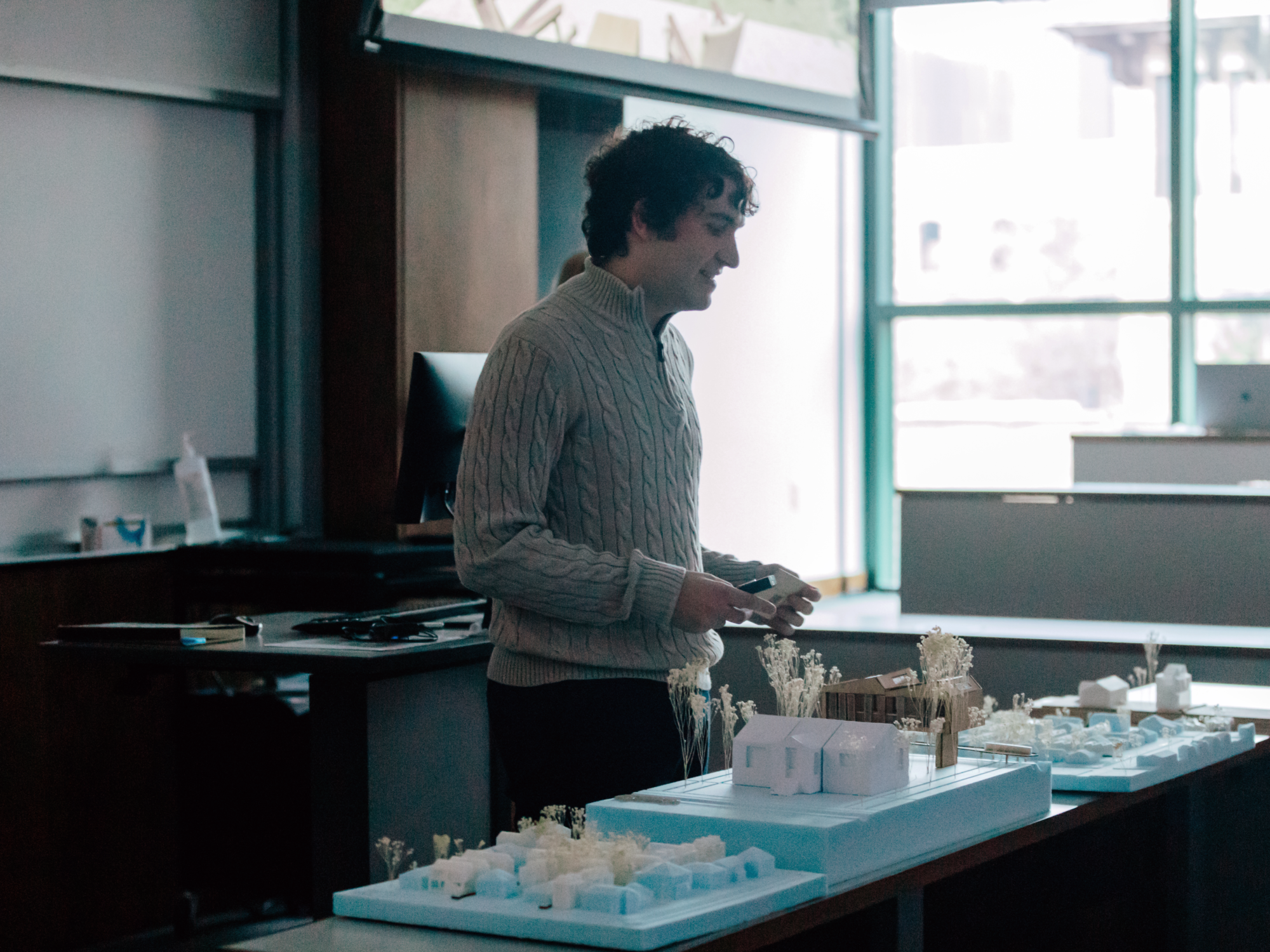Changemaker Catalyst Award recipient Ethan Lewis traveled to Los Angeles, CA, in March 2023 to research accessory dwelling units (ADUs) for his interdisciplinary Honors Thesis in Architecture and Real Estate.
For the past year, I have been hard at work on my honors thesis. The Thesis was entitled Backyard Building: Rethinking New Orleans Single-Family Neighborhoods Through Prefabricated Accessory Dwelling Units. The project comprised a real estate development investigation and architectural proposal focusing on revitalizing stagnating single-family neighborhoods in New Orleans through legalizing ADUs.
In March of 2023, I traveled to Los Angeles, a center of ADU production, to interview experts and examine existing ADUs. The Taylor Center’s Changemaker Catalyst Award funded this trip. In the other LA, 1/4th of all new units of housing produced last year were ADUs, showing the transformation impact ADU legalization can have on housing supply under the right conditions.
While in Los Angeles, I interviewed five experts in the field, including architects, developers, and advocates. These interviews provided valuable insights into the ADU landscape and the challenges of ADU design.
To further enhance my knowledge, I attended Tinyfest at the Del Mar Fairgrounds, which offered an opportunity to explore existing prefabricated unit options and gain insights into current strategies and comparative construction costs. This experience revealed that prefabricated units have the potential to significantly reduce construction time and secondary expenses such as permitting. However, it became apparent that prefabricated units are not necessarily cheaper per square foot than on-site construction. Additionally, while modular construction shows promise, it is not yet commercially viable for ADUs.
During my research in Culver City, one of the early adopters of ADU legalization, I discovered how ADUs had become a prevalent housing type in the community. I observed this phenomenon firsthand and analyzed it by diagraming and documenting a specific block. However, it became evident that there was a missed opportunity to reimagine the block and promote community integration and engagement. Such initiatives have the potential to positively impact various neighborhood characteristics and enhance the overall living experience.
Overall, the interviews, visits to Tinyfest, and on-site exploration in Culver City contributed to a deeper understanding of ADUs, their production dynamics, and the need for thoughtful neighborhood design. These insights informed the development of strategies to optimize ADU utilization and foster community cohesion in my Thesis.
The research was applied to a zoning overlay for New Orleans single-family neighborhoods, which lays the structural framework for the block-scale organization of ADUs. This overlay facilitates the creation of common greens and community nodes, soft borders, and intergenerational living.
Individual prefabricated units were designed to properly balance the resiliency, affordability, and comfort of both existing homeowners and new residents of ADUs.
In light of the research findings, it is recommended that New Orleans consider the legalization of ADUs as part of a comprehensive approach to address the city’s housing needs. This should be accompanied by supportive policies and incentives that facilitate the development of ADUs and other missing middle infill housing, while ensuring their affordability and integration within the existing neighborhood fabric.
I hope this project will inspire others to work on legalizing ADUs in New Orleans and other cities. Already I am finding practical applications for my research as I advise my village’s planning board on their proposed ADU legislation.










